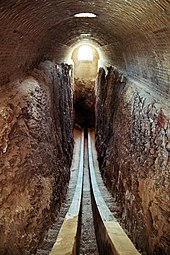
Back Ciencias exactas AN علوم دقيقة Arabic Дакладныя навукі Byelorussian Точни науки Bulgarian সঠিক বিজ্ঞান Bengali/Bangla Ciències exactes Catalan Exaktní věda Czech Шутлавлă ăславсем CV Eksakt videnskab Danish Exakte Wissenschaft German

The exact sciences or quantitative sciences, sometimes called the exact mathematical sciences,[1] are those sciences "which admit of absolute precision in their results"; especially the mathematical sciences.[2] Examples of the exact sciences are mathematics, optics, astronomy,[3] and physics, which many philosophers from Descartes, Leibniz, and Kant to the logical positivists took as paradigms of rational and objective knowledge.[4] These sciences have been practiced in many cultures from antiquity[5][6] to modern times.[7][8] Given their ties to mathematics, the exact sciences are characterized by accurate quantitative expression, precise predictions and/or rigorous methods of testing hypotheses involving quantifiable predictions and measurements.[9]
The distinction between the quantitative exact sciences and those sciences that deal with the causes of things is due to Aristotle, who distinguished mathematics from natural philosophy[10] and considered the exact sciences to be the "more natural of the branches of mathematics."[11] Thomas Aquinas employed this distinction when he said that astronomy explains the spherical shape of the Earth[12] by mathematical reasoning while physics explains it by material causes.[13] This distinction was widely, but not universally, accepted until the scientific revolution of the 17th century.[14] Edward Grant has proposed that a fundamental change leading to the new sciences was the unification of the exact sciences and physics by Kepler, Newton, and others, which resulted in a quantitative investigation of the physical causes of natural phenomena.[15]
Linguistics and comparative philology have also been considered exact sciences, most notably by Benjamin Whorf.[16]
- ^ Grant, Edward (2007), A History of Natural Philosophy: From the Ancient World to the Nineteenth Century, Cambridge: Cambridge University Press, p. 43, ISBN 9781139461092
- ^ "Exact, adj.1", Oxford English Dictionary, Online version (2nd ed.), Oxford: Oxford University Press, June 2016
- ^ Drake, Stillman; Swerdlow, N.M.; Levere, T.H. (1999). Essays on Galileo and the History and Philosophy of Science: Volume 1. University of Toronto Press. ISBN 978-0-8020-7585-7. JSTOR 10.3138/j.ctvcj2wt5.
- ^ Friedman, Michael (1992), "Philosophy and the Exact Sciences: Logical Positivism as a Case Study", in Earman, John (ed.), Inference, Explanation, and Other Frustrations: Essays in the Philosophy of Science, Pittsburgh series in philosophy and history of science, vol. 14, Berkeley and Los Angeles: University of California Press, p. 84, ISBN 9780520075771
- ^ Neugebauer, Otto (1962), The Exact Sciences in Antiquity, The Science Library (2nd, reprint ed.), New York: Harper & Bros.
- ^ Sarkar, Benoy Kumar (1918), Hindu Achievements in Exact Science: A Study in the History of Scientific Development, London / New York: Longmans, Green and Company, ISBN 9780598626806
- ^ Harman, Peter M.; Shapiro, Alan E. (2002), The Investigation of Difficult Things: Essays on Newton and the History of the Exact Sciences in Honour of D. T. Whiteside, Cambridge: Cambridge University Press, ISBN 9780521892667
- ^ Pyenson, Lewis (1993), "Cultural Imperialism and Exact Sciences Revisited", Isis, 84 (1): 103–108, Bibcode:1993Isis...84..103P, doi:10.1086/356376, JSTOR 235556, S2CID 144588820,
[M]any of the exact sciences… between Claudius Ptolemy and Tycho Brahe were in a common register, whether studied in the diverse parts of the Islamic world, in India, in Christian Europe, in China, or apparently in Mesoamerica.
- ^ Shapin, Steven (2018). The Scientific Revolution (2nd ed.). Chicago, IL: The University of Chicago Press. pp. 46–47. ISBN 9780226398341.
- ^ Principe, Lawrence (2011). The Scientific Revolution: A Very Short Introduction. New York, NY: Oxford University Press. p. 27. ISBN 9780199567416.
- ^ Grant, Edward (2007), A History of Natural Philosophy: From the Ancient World to the Nineteenth Century, Cambridge: Cambridge University Press, pp. 42–43, ISBN 9781139461092
- ^ Cormack, Lesley (1994). "Flat Earth or round sphere: misconceptions of the shape of the Earth and the fifteenth-century transformation of the world". Ecumene. 1 (4): 365. doi:10.1177/147447409400100404. JSTOR 44251730 – via JSTOR.
- ^ Aquinas, Thomas, Summa Theologica, Part I, Q. 1, Art. 1, Reply 2, retrieved 3 September 2016,
For the astronomer and the physicist both may prove the same conclusion: that the earth, for instance, is round: the astronomer by means of mathematics (i.e. abstracting from matter), but the physicist by means of matter itself.
- ^ Grant, Edward (2007), A History of Natural Philosophy: From the Ancient World to the Nineteenth Century, Cambridge: Cambridge University Press, pp. 303–305, ISBN 9781139461092
- ^ Grant, Edward (2007), A History of Natural Philosophy: From the Ancient World to the Nineteenth Century, Cambridge: Cambridge University Press, pp. 303, 312–313, ISBN 9781139461092
- ^ Benjamin Whorf, Linguistics as an exact science. In Language, thought and reality: Selected writings of Benjamin Lee Whorf. Edited by J.B. CarrollM.I.T. Press, 1956, 20–232.